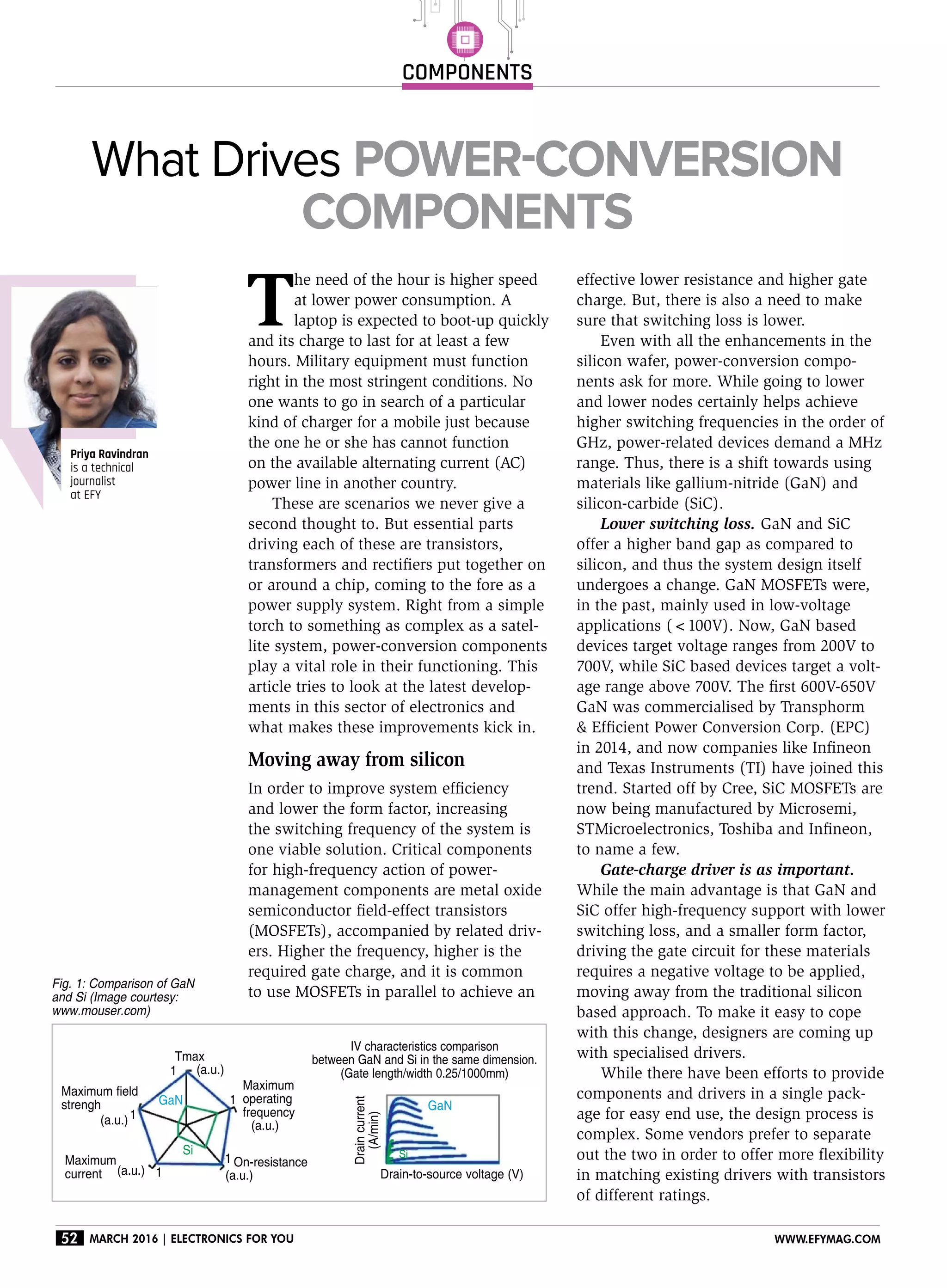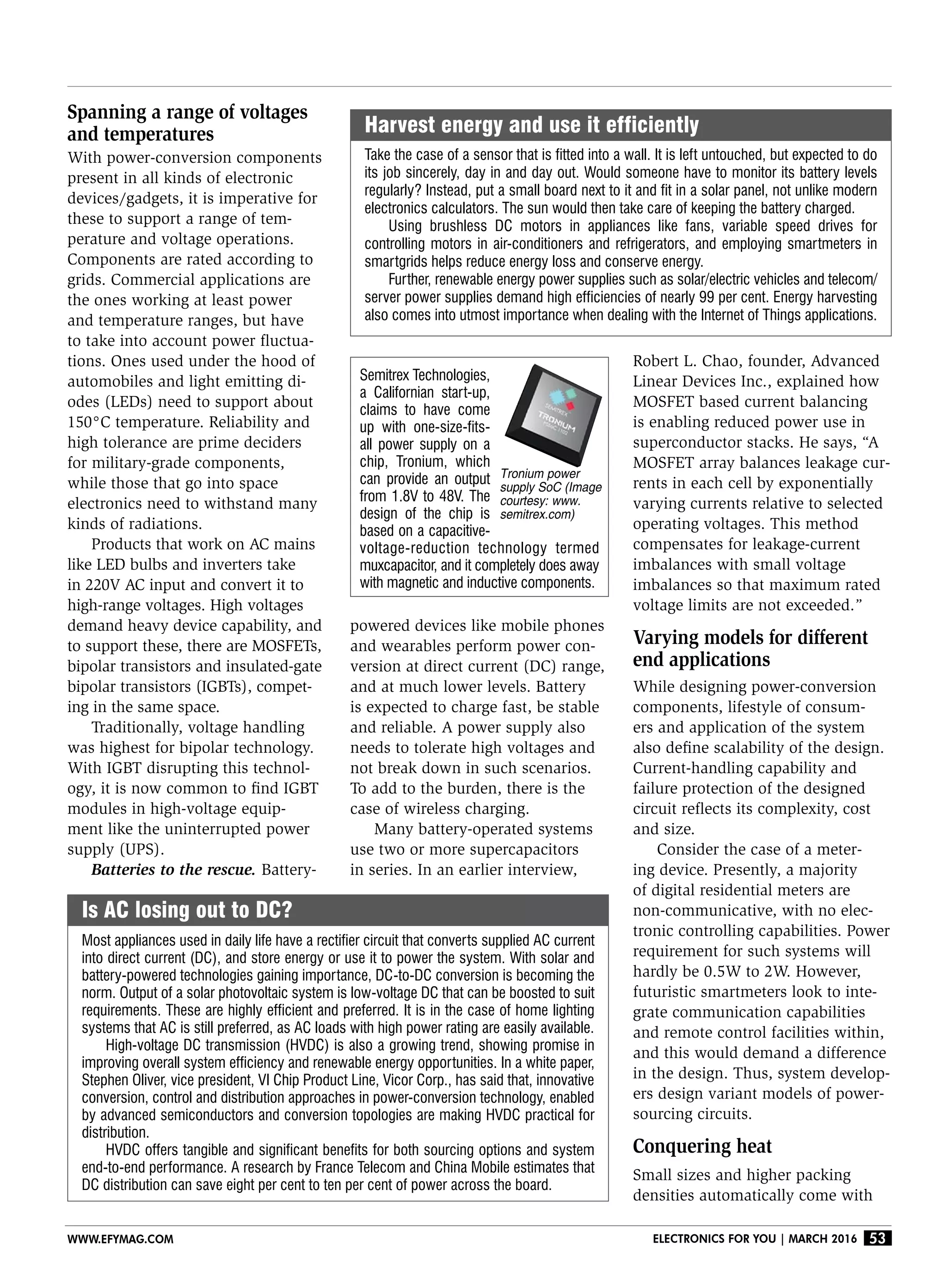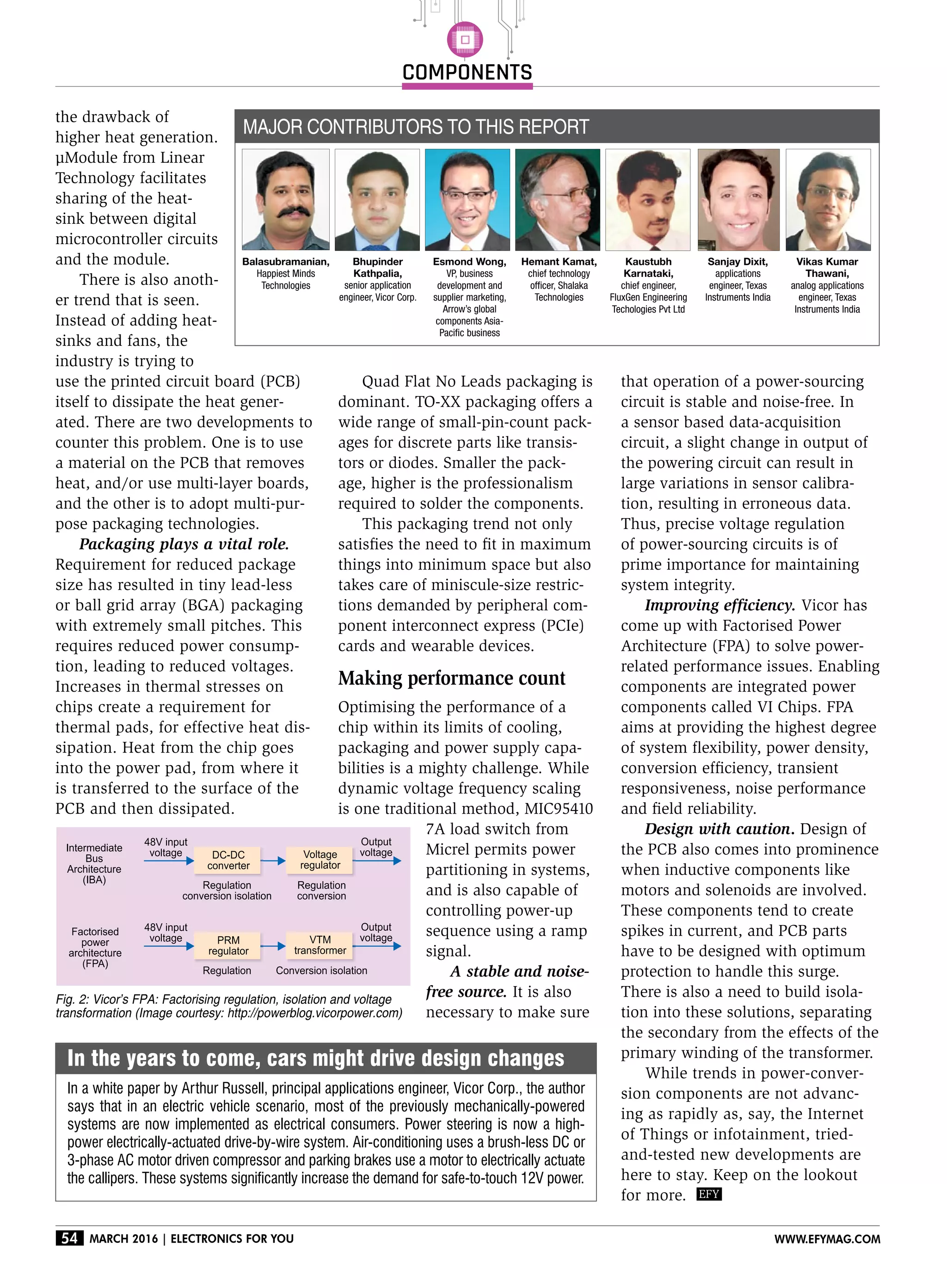This document discusses recent developments in power-conversion components for electronics. It begins by noting the need for higher speeds and lower power consumption in devices like laptops and military equipment. It then discusses how new materials like gallium nitride and silicon carbide allow for higher switching frequencies and lower losses compared to silicon. These new materials are being used in power MOSFETs and IGBTs. The document also notes the need for power-conversion components to operate over a wide range of voltages and temperatures depending on the application. It discusses some challenges in designing components for applications like smart meters and challenges of reducing size while managing heat.


